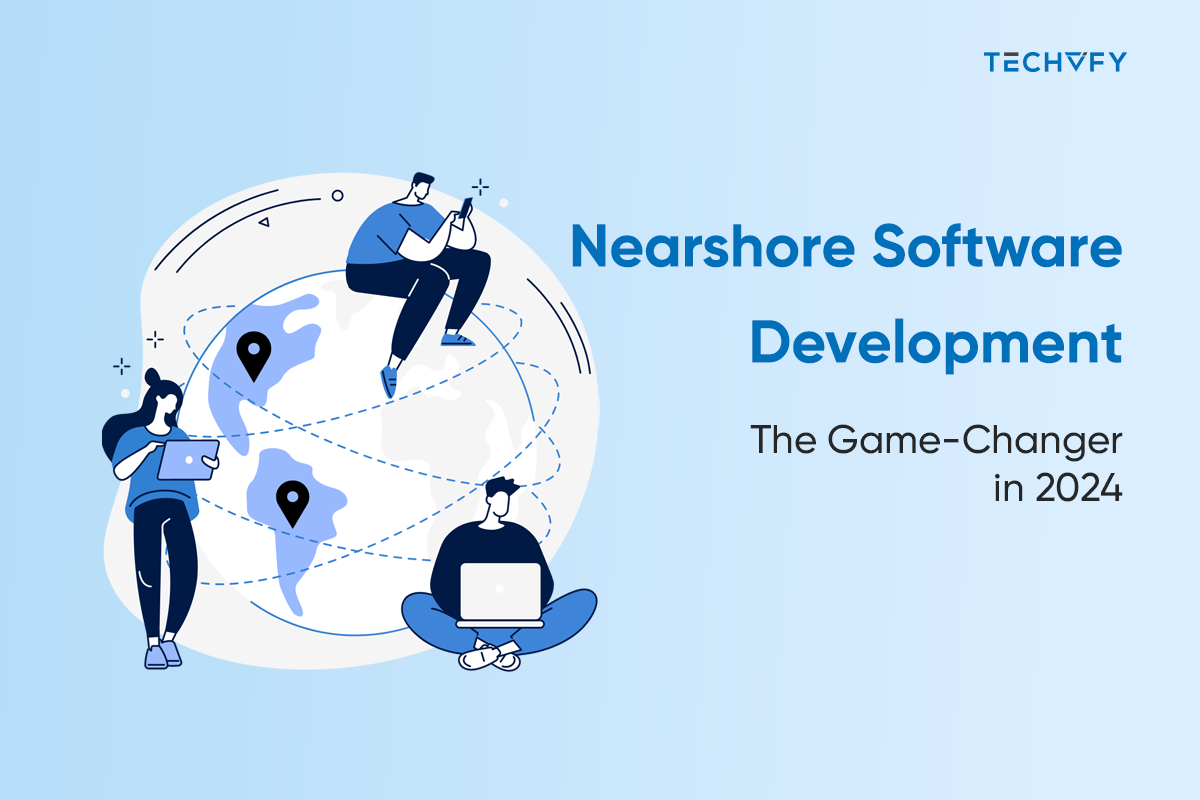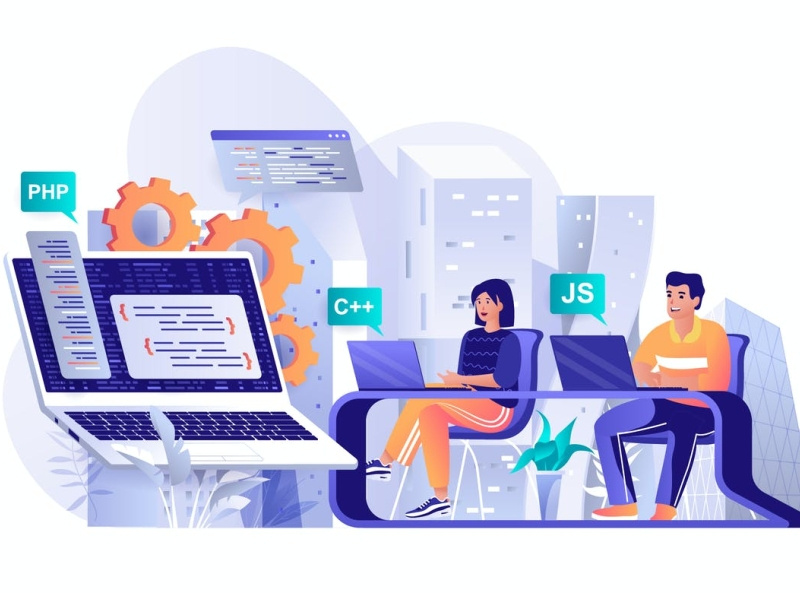Everything You Need To Know About Software Development For Startup
- TECHVIFY Team
- 0 Comments
If you’re embarking on the thrilling journey of launching a startup, you already know that in today’s fast-paced digital landscape, having great software isn’t just an asset—it’s a necessity. Whether you’re building a revolutionary app, a powerful platform, or innovative software solutions, the right approach to software development can set your startup apart and propel it towards success.
In this guide, we’ll dive into everything you need to know about software development for your startup. From choosing the right technologies and assembling a stellar development team, to adopting the most effective development methodologies and navigating through common challenges, we’ve got you covered. Our goal is to provide you with insightful, actionable advice that will help you transform your visionary ideas into reality, all while maintaining that spark of startup enthusiasm.
So, buckle up and get ready to unleash your startup’s potential through smart, efficient, and impactful software development!
1. Understanding the Challenges: Why Software Projects Fail

Embarking on a software development project can be a daunting task, particularly in the high-stakes environment of a startup where resources are often limited and the pressure to succeed is high. Despite best efforts, a significant number of software projects do not meet their initial expectations or standards. Understanding the statistics behind these failures can provide valuable insights into where things commonly go wrong and how to avoid these pitfalls.
Here are some updated statistics that highlight the challenges faced in software development:
- Cost Overruns: 52.7% of software projects will cost 189% or more of their original estimates. This staggering figure underscores the difficulty in accurate budgeting and resource allocation.
- Poor Requirements Management: 32% of software project failures are attributed to poor requirements management, highlighting the need for clear and thorough planning.
- Project Management Issues: 47% of unsuccessful projects fail due to poor project management, emphasizing the importance of effective leadership and coordination.
- Resource Allocation: 46% of CIOs believe that their organization has more projects than people can manage, leading to overburdened teams and reduced productivity.
- Quality Assurance: Only 52% of software projects pass the post-release test for quality, indicating a high prevalence of quality-related issues in project outputs.
- Delays in Delivery: Approximately 40-50% of software projects are delivered late, which can disrupt market entry timing and overall business strategy.
- Lack of Resources or Capabilities: 27% of software projects fail because the organization lacks the necessary resources or capabilities, a challenge particularly acute for startups.
Looking to Outsource Development?
Contact TECHVIFY – Vietnam’s Leading Offshore Software Development & Outsourcing Company, for a consultation and development services.
2. What’s The Goal Of Software Development For Startups?
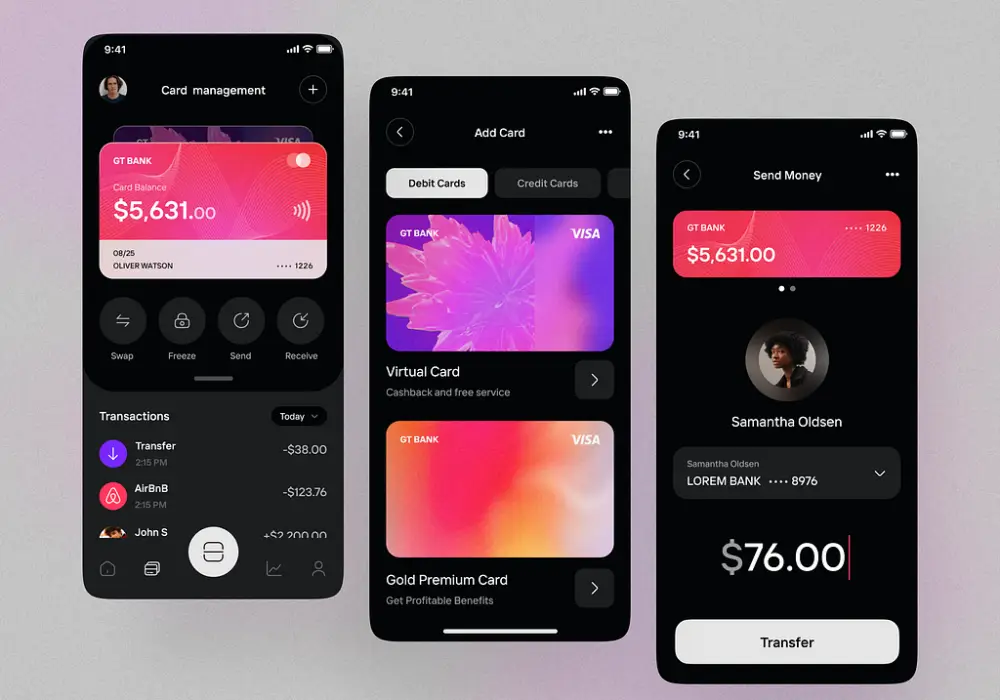
Most founders quickly find themselves in need of software development capabilities shortly after launching their startups. The motivations for embarking on software development vary greatly among startups, depending on their strategic goals and market demands.
2.1. Validating Business Ideas
The journey often begins with the need to validate a business idea before fully committing to an extensive feature set. Startups typically do this by developing a Minimum Viable Product (MVP). An MVP includes only the most essential features necessary to test the basic business assumptions. For example, consider a startup planning to launch a peer-to-peer (P2P) payment app in the US market. They might start by creating an MVP that enables users to send money using just a phone number. After releasing this MVP to a target audience, the startup can gather feedback and decide whether to invest further in developing the application.
2.2. Scaling For Growth
Once the startup gains traction, the next objective is often scaling the software to handle increased traffic and expand its market reach. Utilizing cloud services allows the startup to scale computing resources on-demand, accommodating growth without substantial increases in operating costs. This scalability facilitates expansion into new markets efficiently and effectively. If internal resources are stretched thin, startups might consider outsourcing to reputable IT service providers to manage the increased development needs.
2.3. Collecting And Analyzing Data
Adopting a product mindset, startups can use their software as a tool for collecting and analyzing data, enabling them to make well-informed decisions that support business growth. This might involve integrating analytics capabilities into their applications, allowing them to identify trends, assess customer sentiment, and more. The software can be designed to collect data, which is then sent back to servers for processing and analysis, turning raw data into actionable insights.
2.4. Gathering User Feedback
For startups, continuous user feedback is crucial to refine and adjust the product to better meet market needs. Software applications provide a direct channel for gathering this feedback. Startups can enhance user engagement by integrating features like AI-powered chatbots that not only offer customer support but also collect feedback, which is essential for ongoing development and improvement. This feedback loop is vital for startups aiming to stay relevant and competitive in their market space.
2.5. Enhancing Customer Experience
For startups, delivering an exceptional customer experience is paramount. Software development allows for the creation of intuitive and engaging user interfaces, personalized user journeys, and real-time customer support systems. By continuously improving the software based on user interactions and preferences, startups can significantly enhance the overall customer experience, leading to higher satisfaction and retention rates.
2.6. Facilitating Seamless Integrations
As startups grow, the need to integrate with other software systems and platforms becomes increasingly important. Developing software that is capable of integrating seamlessly with tools like CRM systems, payment gateways, and third-party APIs is crucial. These integrations enable startups to streamline operations, automate processes, and ensure a cohesive ecosystem that supports business efficiency and scalability.
2.7. Supporting Mobile Accessibility
In today’s mobile-first world, ensuring that software solutions are optimized for mobile devices is essential. Startups need to develop applications that are not only functional but also optimized for performance on smartphones and tablets. This mobile accessibility helps startups reach a wider audience, cater to mobile users, and stay relevant in a rapidly evolving digital landscape.
2.8. Ensuring Security and Compliance
Startups, particularly those in sectors like finance and healthcare, must prioritize the security and compliance aspects of their software. Developing robust security protocols and ensuring compliance with relevant regulations (such as GDPR for data protection or HIPAA for healthcare) are critical. This builds trust with users and protects the company from potential legal and reputational risks associated with data breaches and compliance failures.
3. Startup Software Development Process
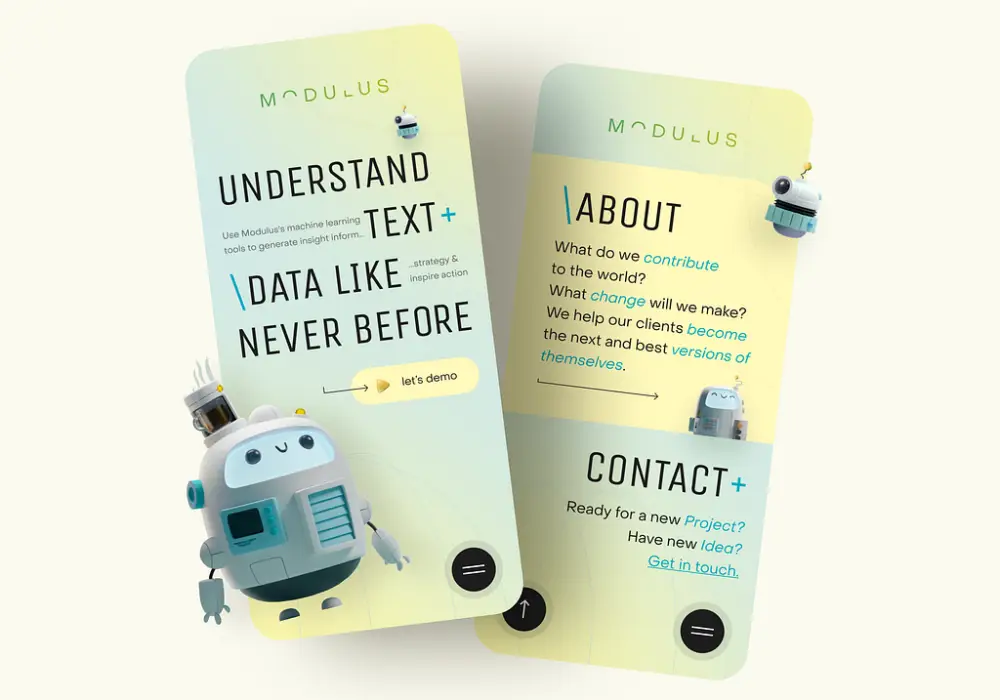
Software development for startups involves a dynamic and multifaceted process, demanding rigorous collaboration among various software experts. This section breaks down the development process into distinct phases, providing insights into each stage and its significance.
3.1. Idea Generation and Concept Refinement
The initial stage in the development process where startups brainstorm and refine their core ideas. This phase is crucial for setting a solid foundation and direction for the product.
- Brainstorming Sessions: Engage in creative sessions to generate a wide array of ideas, encouraging out-of-the-box thinking and innovation.
- Market and Feasibility Studies: Conduct research to assess the viability and scalability of the ideas within the target market.
- Selection and Refinement: Narrow down the ideas based on potential impact and feasibility, refining the selected concept into a clear and actionable plan.
3.2. Market Validation and Fit Analysis
This phase is about ensuring that the product concept aligns well with market demands and customer needs. It involves direct interactions with the target market and analysis to refine the product offering.
- Market Research: Utilize surveys, focus groups, and market analysis to gather detailed insights about customer needs and market dynamics.
- Competitor Analysis: Study competitors thoroughly to identify gaps in the market and opportunities for differentiation.
- Customer Feedback: Engage potential customers through interviews or pilot testing to gather feedback on the concept, refining the product based on these insights.
3.3. Monetization Models and Revenue Strategies
This phase focuses on defining how the startup will generate revenue from its product. Choosing the right monetization strategy is critical for financial sustainability and long-term success.
- In-app Purchases: Particularly prevalent in gaming and utility apps, this model allows users to buy additional features, functionalities, or virtual goods directly within the app.
- Paid Subscription: This model offers a steady revenue stream by charging users a recurring fee for access to premium content or services. It’s ideal for apps offering continuously valuable content or services.
- Sponsorship: Partnerships with brands can provide substantial revenue, where sponsors pay to have their content or advertisements integrated into the app. This is effective in apps with a large or niche user base that aligns with the sponsor’s target market.
- Freemium Model: Offers basic features for free while charging for advanced features or add-ons. This strategy can attract a large user base initially and convert them into paying customers over time.
- Advertising: Incorporating ads into the app, either through banners, interstitials, or video ads, can generate revenue from user interactions and impressions without directly charging the users.
3.4. Design Thinking and UX/UI Principles
In this phase, startups focus on the user experience and interface design, which are pivotal in ensuring the product is user-friendly and appealing. Good design can significantly enhance user satisfaction and engagement.
- User-Centered Design: Emphasizes understanding the users’ needs and behaviors to create intuitive and accessible designs that improve user satisfaction and retention.
- Consistency and Simplicity: Maintains a consistent and simple interface across the app to ensure ease of use and prevent user confusion.
- Responsive Design: Ensures that the app provides an optimal experience across different devices and screen sizes, enhancing accessibility and usability.
- Accessibility Features: Incorporates design elements that make the app usable for people with various disabilities, enhancing inclusivity and broadening market reach.
3.5. Technology Stack Selection and Management
Selecting the appropriate technology stack is crucial for building a scalable and maintainable software product. This phase involves decisions about the programming languages, frameworks, databases, and other technologies that will be used.
- Scalability and Flexibility: Choose technologies that not only meet current needs but also allow for easy scaling and adaptation as the business grows and evolves. For example, using cloud services like AWS or Azure can provide scalable infrastructure as needed.
- Community and Support: Opt for technologies with strong community support and ample development resources, which can help reduce development time and costs. For instance, JavaScript with frameworks like React or Angular benefits from extensive community support and rich ecosystems.
- Security and Reliability: Prioritize technologies known for their security features and reliability, ensuring that the product remains secure and operational under various conditions. For example, Java is renowned for its robust security features, making it a popular choice for enterprise applications.
- Cost-Effectiveness: Evaluate the cost implications of different technologies, considering both initial investment and long-term maintenance expenses, to ensure the chosen stack is financially sustainable. For instance, choosing open-source databases like PostgreSQL can reduce costs without compromising performance.
- Cross-Platform Development: Select development tools that support multiple platforms to maximize market reach. For example, Flutter is excellent for developing cross-platform apps efficiently, allowing a single codebase for both iOS and Android, while React Native provides near-native performance across platforms.
3.6. Agile Development and Iterative Testing
Agile development methodologies are key to a startup’s ability to adapt and evolve its product in response to user feedback and changing market conditions. This phase emphasizes rapid cycles of development and testing to refine the product continuously.
- Sprint Planning: Organize development into short sprints that focus on delivering specific features or improvements, allowing for frequent reassessment and adjustments.
- Continuous Integration and Deployment (CI/CD): Implement CI/CD pipelines to automate the testing and deployment processes, ensuring that new code changes are reliably and quickly integrated into the live product.
- User Testing and Feedback Loops: Regularly test the product with real users and collect feedback to inform development decisions. This helps to ensure that the product remains aligned with user needs and expectations.
Let’s talk
A consultation with the Client Relationship Manager, who represents TECHVIFY, without any commitment from your side, will give you:
- Structured and clear vision of your future application
- Information about how our software development company guarantees 100% on-time and on-budget delivery
- Recommendations for choosing the tech stack
- Advice on further steps
- Business-side recommendations
- Rough project estimation on software development
TECHVIFY is right where you need. Contact us now for further consultation:
3.7. Strategic Planning and MVP Development
This phase is crucial for aligning the startup’s vision with practical steps to create a Minimum Viable Product (MVP) that effectively tests market assumptions with minimal resources.
- Goal Setting and Roadmap Development: Define clear, measurable goals and establish a detailed product roadmap that outlines key milestones and timelines for MVP development.
- Lean Development Practices: Adopt lean methodologies to focus on building the core functionalities that address the primary needs of your target audience, minimizing waste and speeding up time to market.
- Feedback and Iteration: Launch the MVP to a select group of users to gather insights and feedback, which can be used to validate assumptions and iterate on the product design and functionality.
3.8. Quality Assurance and Testing Strategies
Quality assurance is vital to ensure that the software meets the necessary standards before it reaches the end users. This phase focuses on rigorous testing to identify and fix bugs.
- Test Plan Development: Create a comprehensive test plan that covers various aspects of the software, including functionality, usability, security, and performance.
- Automated Testing: Implement automated testing frameworks to increase the efficiency and coverage of tests, ensuring that every part of the application is thoroughly tested.
- User Acceptance Testing (UAT): Conduct UAT with real users to ensure the software meets their requirements and expectations before the final release.
3.9. Deployment, Scaling, and Maintenance
After testing, the focus shifts to deploying the software to a production environment, ensuring it can scale to meet user demand, and maintaining its performance over time.
- Deployment Automation: Use deployment automation tools to streamline the process of getting software from development to production environments reliably and consistently.
- Scalability Planning: Ensure the infrastructure can handle increased load; utilize scalable cloud services and load balancing techniques to manage varying levels of user demand.
- Ongoing Maintenance: Establish processes for ongoing monitoring and maintenance of the system to ensure it operates smoothly, updating it as necessary to address new security vulnerabilities and other issues.
3.10. Sustaining Success: Ongoing Support and Product Evolution
The final phase focuses on supporting the product after launch and planning for its future evolution based on user feedback and market trends.
- Customer Support Framework: Set up a robust customer support system to handle inquiries and issues effectively, enhancing user satisfaction and retention.
- Continuous Feedback Loop: Implement mechanisms for collecting continuous user feedback, enabling regular updates and improvements to the product based on user needs and preferences.
- Evolution and Expansion: Plan for the future evolution of the product, considering technological advancements and changing market conditions, to keep the product relevant and competitive.
4. Essential Software Development Strategies for Startups
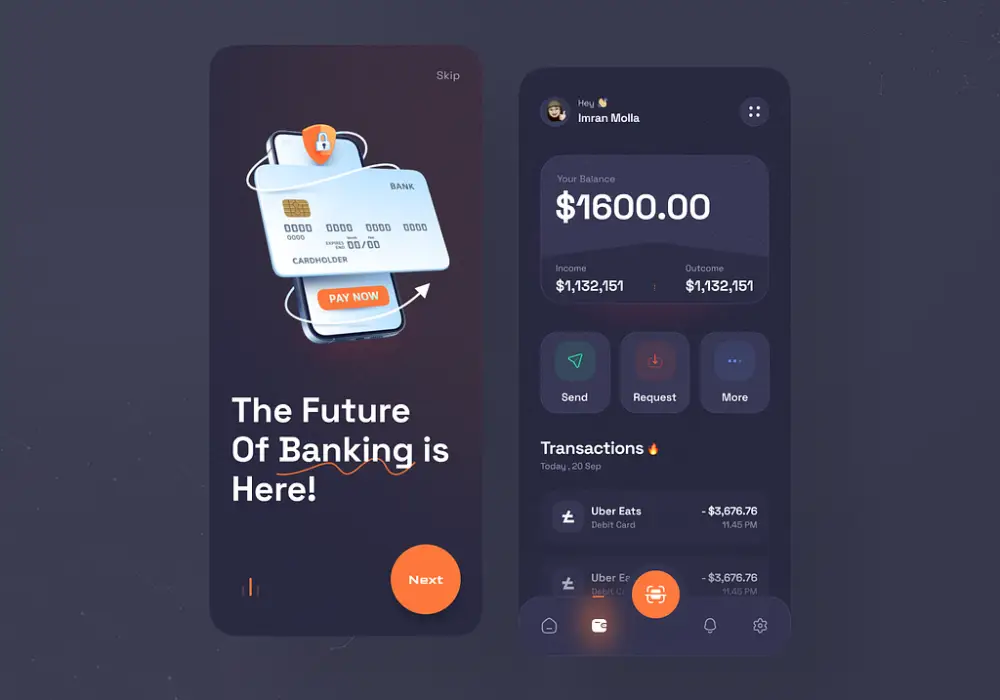
In the startup world, the development process is crucial for shaping a viable business model that adapts and scales according to market demands. This section delves into essential strategies for startups, from initial planning through to robust execution.
4.1. MVP First Approach
The concept of starting with a Minimum Viable Product (MVP) is critical in the startup ecosystem. It allows businesses to test their hypotheses with minimal resources, gather valuable user feedback, and iterate before making significant investments.
- Focus on Core Features: Identify and focus on developing the core features that solve the primary problem for your target audience. This approach helps in reducing time and resources spent on less critical features.
- Feedback Integration: Use early adopter feedback to refine and improve the product. This continuous loop of feedback and development helps in creating a product that truly resonates with the users.
- Cost-Efficient Scaling: An MVP approach allows for testing scalability in a controlled manner, adjusting the product and infrastructure as user base grows without overcommitting resources upfront.
4.2. Emphasize Data-Driven Strategy
Adopting a data-driven approach is crucial for startups to ensure that decisions are made based on evidence rather than intuition. This methodology not only enhances product development but also informs broader business strategies.
- Analytics Integration: From the outset, integrate robust analytics tools within the application to continuously track user activity and behavior. This will provide a rich dataset from which to draw insights.
- Informed Decisions: Harness the power of data to guide decisions related to product development, user experience enhancements, and marketing campaigns. Analyzing user behavior patterns and feedback can pinpoint what features to prioritize or adjust.
- Iterative Improvements: Employ data systematically to refine the product. Regularly scheduled reviews of collected data help identify trends and anomalies, driving continuous improvement and ensuring the product evolves in alignment with user expectations and market needs.
- Predictive Analytics: As the data pool grows, utilize predictive analytics to forecast future trends and user behaviors. This can be pivotal in proactively adapting the product roadmap and strategic initiatives, ensuring the startup remains ahead of the curve.
- A/B Testing: Implement A/B testing to make data-backed decisions about changes to the user interface and experience. This method allows for comparing different versions of a product feature to determine which one performs better in terms of user engagement and satisfaction.
4.3. Prioritize Product Discovery
Product discovery is an essential phase where startups validate ideas through user research, ensuring the product addresses real needs before full-scale development begins.
- User Research: Conduct in-depth research to understand the target audience, their pain points, needs, and behaviors. This foundation informs every aspect of product design and functionality.
- Prototype Testing: Develop prototypes and use them in user testing sessions to gather direct feedback on product concepts and usability. This iterative process helps refine the product vision and ensures alignment with user expectations.
- Stakeholder Involvement: Engage with all key stakeholders, including potential customers, investors, and team members, during the discovery phase to incorporate diverse perspectives and expertise, which can lead to more holistic product solutions.
- Agile Feedback Loops: Integrate feedback from all tests and discussions back into the development process rapidly. This agility allows the team to make informed decisions and pivot as necessary based on real user and market data.
4.4. Document Rigorously
Maintaining thorough documentation throughout the software development process is vital for ensuring clarity and consistency, particularly in fast-paced startup environments.
- Code Documentation: Ensure that all code is well-documented to facilitate easier maintenance, updates, and onboarding of new developers.
- Process Documentation: Keep records of decisions and changes in project management tools. This includes user stories, sprint reports, and meeting notes, which help track progress and rationale behind decisions.
- Knowledge Sharing: Use documentation as a tool for knowledge sharing among team members. This can prevent siloed information and ensure everyone is aligned with the project’s goals and current status.
- Regulatory Compliance: In industries where compliance is crucial, documentation is key to demonstrating adherence to legal and industry standards during audits or evaluations.
4.5. Manage Resources Wisely
Effective resource management is crucial for startups to maximize their limited resources without compromising on quality or scope.
- Budget Allocation: Carefully plan and monitor spending to ensure funds are used efficiently. Prioritize expenses that directly contribute to product development and customer acquisition.
- Time Management: Use agile methodologies to manage time efficiently, focusing on sprints and prioritized tasks that deliver the most value to the product and business.
- Talent Utilization: Align team members’ skills with appropriate tasks. Regularly assess the team’s capabilities and provide training or hire additional talent as needed to meet project demands.
- Technology Leverage: Choose scalable and cost-effective technologies that meet current needs but are flexible enough to grow with the company. This includes decisions about software, hardware, and cloud services.
By adhering to these strategies, startups can navigate their development cycle more effectively, ensuring they build a product that is not only viable in the market but also sustainable and scalable over time.
Learn More On:
5. Understanding Software Development Costs for Startups
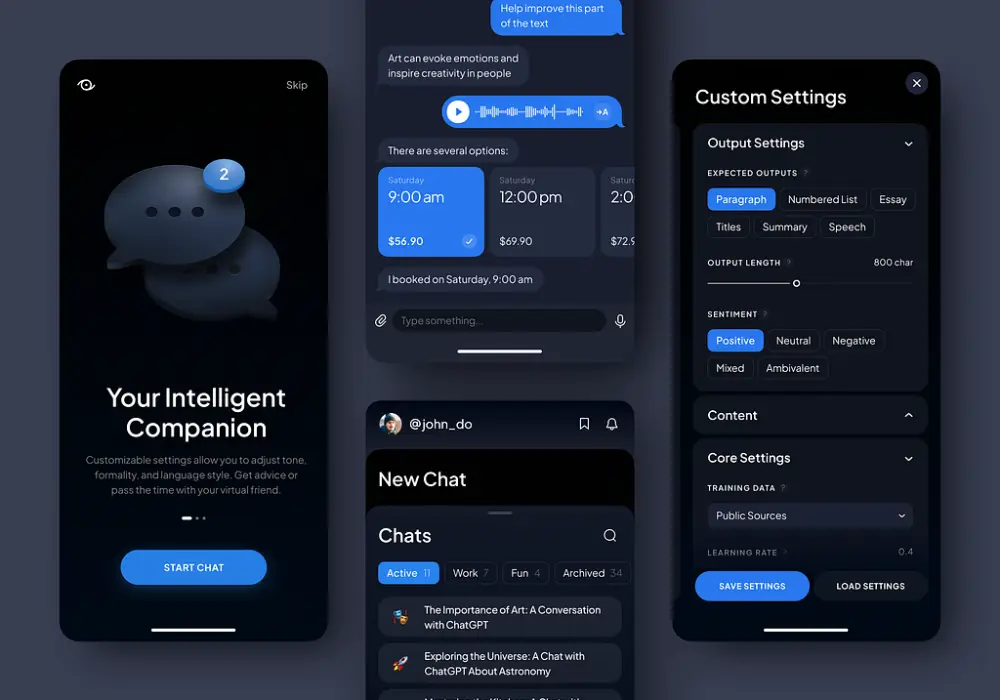
Software development can be a major investment for startups, with costs ranging markedly based on the scope and complexity of the project. Building an application might cost anywhere from $50,000 to $250,000, influenced by a variety of factors.
Developing a basic web application is typically less expensive than creating a comprehensive multiplatform solution equipped with numerous advanced features. The complexity of the UI/UX design also plays a significant role, as more intricate designs require additional time and expertise to develop. Moreover, applications that necessitate integrations with third-party services often involve extra coding and testing, further escalating costs.
The bulk of software development expenses stems from the labor involved. If you opt for an in-house development team, you are committed to fixed salaries, benefits, and potentially substantial overhead costs including workspace rental, hiring advertisements, training, and equipment.
Geographical location also significantly affects development costs. For instance, in the United States, the average monthly cost of hiring a software developer is approximately $8,504. To reduce these costs, many startups choose to outsource their software development projects. By engaging offshore development companies in regions like Southeast Asia, particularly Vietnam, startups can benefit from lower expenses while still receiving high-quality deliverables.
| Feature (Basic) | Hour | Cost (US) – $140 / hour | Cost (Vietnam) – $30 / hour |
|---|---|---|---|
| Tutorial screens | 30 | $4,200 | $900 |
| Sign in | 80 | $11,200 | $2,400 |
| Home page | 200 | $28,000 | $6,000 |
| Photo/video | 60 | $8,400 | $1,800 |
| User profile | 70 | $9,800 | $2,100 |
| Search | 60 | $8,400 | $1,800 |
| Chat | 90 | $12,600 | $2,700 |
| Notifications | 40 | $5,600 | $1,200 |
| Total | $88,200 | $18,900 |
Conclusion
Effective software development is pivotal for the success of any startup, provided it is executed with precision and strategic planning. Proper planning in software development enables startups to position themselves for sustainable growth and facilitates the early validation of business ideas. From the initial stages of conceptualization, each phase of software development is crucial.
Through to ongoing support for users after release, startups must navigate these stages meticulously. By doing so, they create solutions that truly resonate with their target audience, ensuring both relevance and functionality. This thoughtful approach to software development not only helps in building a robust product but also lays a strong foundation for future scaling and enhancements.
TECHVIFY – Global AI & Software Solution Company
From Startups to Industry Leaders: TECHVIFY prioritizes results, not just deliverables. Accelerate your time to market and see ROI early with high-performing teams, AI (including GenAI) Software Solutions, and ODC (Offshore Development Center) services.
- Email: [email protected]
- Phone: (+84)24.77762.666




